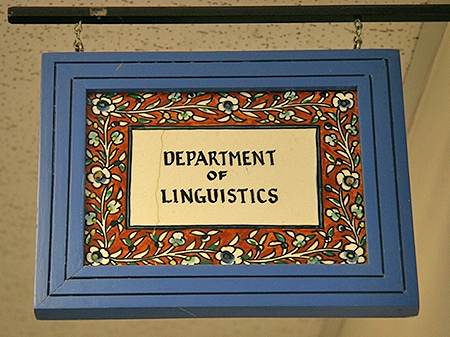
Linguistics ETDs
Publication Date
Spring 2-15-2019
Abstract
This dissertation uses data from Zaban Eshareh Irani, Iranian Sign Language, to investigate the linguistic strategies for the expression of modality in this language. Manual and facial markers of modality are recognized and analyzed based on their form and the semantic domain each covers. Vander Auwera and Plungian (1998) offered a semantic map for categorization of different modals across languages. According to their framework, modality can be classified into two vast domains of possibility and necessity. Based on the source of the modal force then, each modality domain is categorized into three groups of participant-external, participant-internal and epistemic. In this dissertation, ZEI modal markers are discussed based on different discursive contexts in which they appear, and then categorized within Van der Auwera and Plungian (1998) framework. Apart from a discursive semantic analysis of ZEI modals, I try to develop a cognitive approach towards understanding facial channel in signed languages as opposed to the manual one. Facial markers have always been analyzed as important parts of signed languages' grammar. Three distinct facial markers are explained as markers of modality, both with and without accompanying a manual marker. Applying a cognitive grammar approach to modality (Langacker 1991, 2008, 2013), I show that facial markers are the main indicators of epistemic modality in ZEI. Facial markers are also involved in non-epistemic (effective) modality, for example by marking the degree of modality force.
Language
English
Keywords
Sign Linguistics, Modality, Iranian Sign Language, ZEI, Facial markers
Document Type
Dissertation
Degree Name
Linguistics
Level of Degree
Doctoral
Department Name
Department of Linguistics
First Committee Member (Chair)
Sherman Wilcox
Second Committee Member
Melissa Axelrod
Third Committee Member
Barbara Shaffer
Fourth Committee Member
André Xavier
Recommended Citation
Siyavoshi, Sara. "THE EXPRESSION OF MODALITY IN IRANIAN SIGN LANGUAGE (ZEI)." (2019). https://digitalrepository.unm.edu/ling_etds/62
